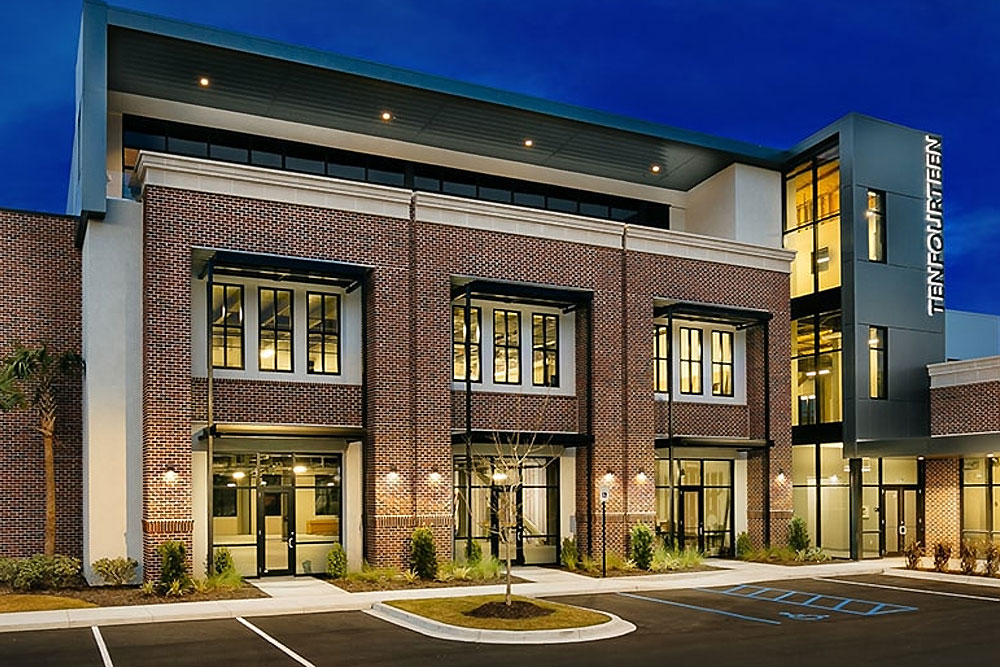Commercial Architecture Trends for 2023

It feels appropriate heading into the year 2023 that we leave 2022 behind and start rethinking how we do things, including how we design commercial buildings in Charleston. Looking to the not-so-distant future, there are many ways you can expect commercial architecture to shift, both in terms of style trends and aiming for more practicality in the COVID-19 era. Here are some commercial architectural trends to look out for in 2023.
Rethinking Commercial Space
The trend of creating spaces that feel very open has been picking up steam for some time now, but it is set to surge forward in 2023. Modern understandings of how people interact with the spaces around them tell us that open layouts are less stressful, both in residential and commercial settings.
Even in an optimistic, post-pandemic 2023, you can expect the lessons of social distancing to stick when architects design new commercial structures. In particular, these areas with more space will be geared towards consumers who visit these buildings. As ample space between members of the public continues to be highly valued, waiting rooms, lobbies, and seating areas meant for public use will grow larger.
On the other hand, you will also see a smaller percentage of new commercial buildings being dedicated to staff. Instead, commercial buildings belonging to companies where many workers can get the job done remotely will prioritize space for larger meeting rooms and open floor plans with few defined hallways.
Looking Up
What happens when you have fewer walls to work with? You focus your design on the ceiling. Again, this is another commercial design trend that has been gaining traction for some time and is only expected to continue.
When you have open floor plans that make way for more space between people, you’ll end up having less wall space to be creative with. Because of this, you’ll start to see more and more commercial buildings where the interior draws attention to the ceilings. This includes adding decorative tiles, wood panels, prints, and unique lighting to ceilings. In the same vein, you’ll also see more creative patterns applied to the floors of commercial spaces as well.
Daylighting Is One of the Commercial Architecture Trends
As the design of commercial buildings aims to become carbon neutral in 2021, indoor lighting will be defined by daylighting, or the use of natural light. Not only does relying less on artificial lighting use less energy, but it also simply creates a more pleasant experience for people working in or visiting the building. Natural lighting promotes a calm atmosphere and creates a sense of connection to the outdoors. By flooding a space with natural light, you also make the most of other design elements already present in the building. And when it comes to the workers in the building, natural light is known to help boost productivity and morale.
LED Light Reveals
Commercial building designs, of course, will still need artificial lighting. But when designers think of ways to light their spaces, they’re thinking more and more outside the box. Businesses want their buildings to stand out, and creatively integrating light solutions is a great way to achieve this.
A trend that’s expected to grow in 2023 is the use of LED light reveals, which is a form of backlighting that illuminates sleek shapes and lines to give an interior eye-catching visual drama. One of the best things about this trend is there are plenty of ways people can get creative with the shapes and designs they choose for their sleek light fixtures.
Contactless Use
In addition to rethinking how space is distributed in commercial buildings, these public spaces will also be designed with new ways of using the building in mind. For instance, designers will begin placing and designing doorways with motion-activated technology in mind. You will also likely spot more motion-activated lights and technology solutions like voice-activated elevators in new commercial buildings.
In addition to providing an environment with a reduced risk of transmitting illnesses, these design elements will help architects create more carbon neutral buildings.
Less Noise
Creating open floor plans does come with a notable downside, especially for office spaces. Noise can travel and echo more when you get rid of walls that normally create hallways and separate rooms.
This problem is hardly unknown, however, and solutions to minimize interior noise are growing more prominent in commercial design. This is why more commercial buildings will be built in 2023 with open spaces that include cost-effective acoustic panels to dampen sounds.
Even during these uncertain times, the future of commercial architecture is bright. Contact Spivey Architects today to discover the possibilities for your next project.